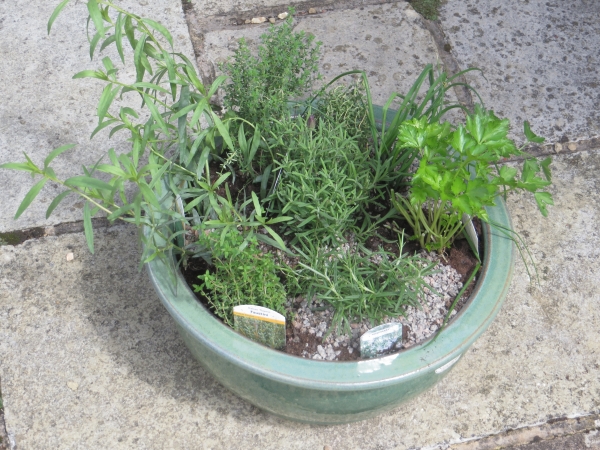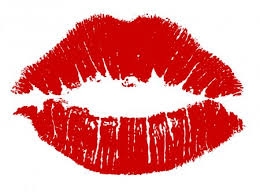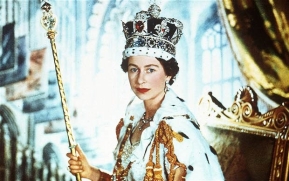Exeat: Day 129/84: Herbs take the heat ...was lipstick banned by MPs in 1650?
Sylvia's Birthday bowl for Avril arrives to warm [28degree] welcome! … presents, sometimes, they don't arrive on time …. but it's always worth the wait; and here at last is what Sylvia had in store for Avril. Almost anything you might need is there for the picking except mint and we have more than enough of that in the garden already beneath the pear tree.

The details according to the myriad labels are as follows: centre of course is lavendulan stoechas deep purple; surrounding are artemisia vienco, faustini Italian thyme, flat lead parsley, chives and rosemary.
National Lipstick Day today! There's little doubt that lipstick is a meme, an enduring cultural imitation to ensure belonging …. amongst the ladies at least. There's been a quisquilian about for a century or so, a nonsense, that in 1770 the British parliament actually banned lipstick saying it had the power to seduce men into marriage; which was classified as witchcraft. If it were the case laws were certainly still available until after WWII to deal with witchcraft! However, neither the British Parliament nor its English precursor ever passed such a law. What is true apparently is that an MP did apparently introduced a Bill against the “vice of painting” in June 1650 but it never received a full parliamentary reading. It is thought to have “likely been introduced at the behest of a Puritan MP but the then Council of State chose not to pursue it.” There can be little doubt that then as now, it can be minacious, threatening, to men but scarcely a terriculament, a threat unless zamzawed, horrendously overdone. It is said Sarah Bernhardt created a scandal by applying “lip rouge” in public whilst it may be surprising that George Washington supposedly wore it. HM Queen & Empress Victoria considered wearing lipstick impolite. During WWII Winston Churchill thought that lip colour boosted morale in an excellent way. Ladies know only too well today of the versatility echoing changes of mood or scenery. Whether lipstick defines one's attitude or channels the inner spirit it adds a subtle accent or a bold statement. Let lips speak but lipstick is the punctuation.
From berries to today’s mind-numbing variety …. the metamorphosis of lipsticks over time is a and interesting tale that surely needs to be told. In ancient civilizations makeup was a status symbol and both men and women indulged. Apart from aesthetics makeup also had medicinal appeal. The Sumerian civilization can be credited as the earliest users of lipsticks with stains was procured from naturally occurring substances like fruits, henna, clay rust and of course insects. Mesopotamian women were a little on the fancier side and used ground precious jewels to add color and shimmer to their lips. Egyptians, perhaps, were the first real lipstick lovers. Striking shades like purple and black were common. They derived colour from some rather interesting sources such as carmine dye from grounded cochineal insects. In fact carmine dye is still used today in lipsticks and other products. However Egyptians also used harmful substances like lead and a mixture bromine man-nite and iodine which easily resulted in serious diseases or even death. In Japan women wore thick makeup and dark lipsticks derived from tar and beeswax. It was apparently only in Greek Empire that the application of lipsticks with prostitutes under obligation to wear dark lips by law!
Around 9 AD an Arab scientist, Abulcasis, invented the solid lipstick. With the advent of Christianity and later puritanical beliefs lipsticks were condemned, red lips being associated with Satan worship and women sporting lipsticks were suspected of being sorcerers and witches. Lip salves, however, were popular and acceptable so women secretly added color to salves or resorted to pinching, biting or rubbing lips with various materials to make them appear redder. The lipstick re-appeared during Queen Elizabeth I’s reign in England when she popularized pale white skin and red lips availability was restricted to noble ladies or actors and actresses who appeared on the stage.
French perfume company Guerlain became the first company to produce lipstick commercially made with deer tallow, beeswax and castor oil which was then wrapped in a silk paper. Lipsticks in cylindrical containers were invented by Maurice Levy. By 1920 lipstick had made a permanent place in the daily lives of women. In 1923 James Bruce Mason Jr. made the swivel up tube and gave us modern lipstick as we know it today. The fashion icons of that day were the silent era movie stars and people re-created their dark lips. Plums, aubergines, cherries, dark reds and browns were the most sought after colours in this era. It was inexpensive and mass produced. Magazines encouraged women to wear stylish colors and women diligently abided. Helena Rubenstein invented the cupid’s bow lipstick that promised to give the coveted shape to the lips. Women also used stencils to achieve the desired cupid’s bow shape of the lips. It was also in 1920s that the first wave of feminism arose with lipsticks considered a symbol of feminism. It was also during this era that French Chemist Paul Baudercroux invented lipstick Rouge Baiser which was supposed to be ‘kiss-proof’ but was quickly taken off the shelf as women found it difficult to get rid off! Companies like Chanel, Elizabeth Arden, and Estée Lauder started selling lipsticks.
The love for lipstick was not deterred by the depression of this era. A survey revealed that 50% of teenage girls fought over lipstick with their parents …. and after the jazz era of 1920s and 1930s was all about elegant and matte finishes. Max Factor started selling lip glosses and became a huge hit among the masses as earlier it was only reserved for Hollywood actresses. Hit by the depression, lipstick was an affordable luxury for the women in this era. Deep plum and burgundy were some of the preferred shades.
Going through the perils of WWII … women in the 1940s took to laborious jobs with men at war frontiers. The supplies of all materials were scarce and lipstick's metal tubes were temporarily replaced with plastic and paper. Makeup in this era was creative and breezy with women actually encouraged to wear reddest of lips to boost morale during the grim time of the war.
 
Besame’s American Beauty was one of the most popular shades of red. But by the peace we entered the era when Hollywood glam icons such as Grace Kelly, Marilyn Monroe, Audrey Hepburn and Elizabeth Taylor were setting the trends. Bold red lips were especially popularized by Marilyn Monroe and Elizabeth Taylor and women in 1950s embraced the trend. Estee Lauder’s Envious was one of the popular shades. A survey in the 1950s claimed that 60% of teenage girls wore lipstick. HM Queen Elizabeth II created her own shade during her coronation in 1952! The shade was customized by the Queen’s favourite brand Clarin’s and called the ‘The Balmoral’ and it apparently was deemed to match her coronation robe. It was also during this era that Revlon came up with their own range of smudge proof lipsticks and then began the war of brands started. Lipstick drew inspiration from arts, and popular culture and a variety of shades came and went from the fashion scene. There was something to suit everybody’s preference. In 1973 Bonnie Bell introduced, ‘Lip Smackers’, that is lipstick with flavours. These became an instant hit with the younger crowd. Aerin’s Rose Balm Lipstick in pretty and corals like Maybelline’s Orange Danger were some of the iconic shades of the era. Lipsticks in the 1980s much like everything was all about shimmers and gloss. The concept of power dressing arrived and bold red lips were a statement once again. Matching your lip color with your outfits was common and in vogue. Hot pink lips became all the rage keeping up with dance party culture of the era. Goth[-enburg?] lips were popular in some alternative sub cultures. This was the era of grunge and makeup was simple. People were getting more and more conscious about environment and demand for chemical free natural formulas for lipstick grew. Tattooed or getting semi-permanent colour on the lip was getting popular. But if the 90s is remembered as the era of lip liners nothing screams the 1990s more than darker lip liners with a lighter lipstick. Brands such as Mac and Urban Decay came into the scene. Now, the variety of colours and formulae of lipsticks available are mind-blowing. According to a survey on an average European and US women spend more than £2000 dollars on lipstick in their lifetime. From nudes to pink to even whackier options like yellow or green lipstick has truly become a symbol of self-expression.
Published Date: July 29th 2020
|





